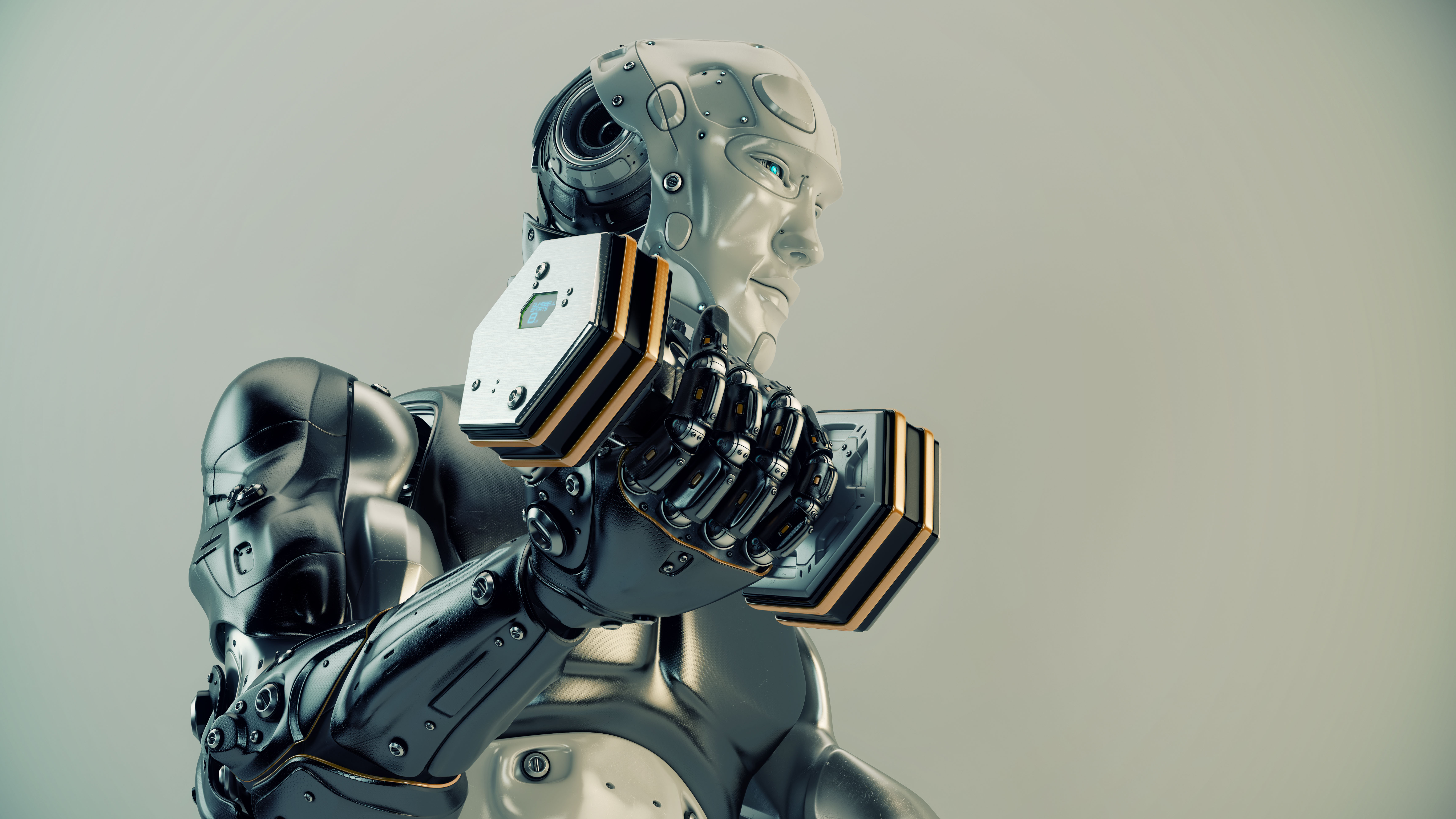Next up for robots: Synthetic muscle
Human muscles inspire new super-stretchy, self-healing material


Anyone who has ever smashed their iPhone's screen or depleted a battery knows that devices are destined to deteriorate and eventually die. But what if they could one day heal themselves? That's the vision Chao Wang, a polymer researcher and assistant professor in the chemistry department at the University of California, Riverside has for the future — and he helped invent a super-stretchy, self-healing polymer that could one day make it possible.
Together with colleagues at Stanford University, Nanjing University in China, and other institutions, Wang helped create a synthetic polymer that acts in some astonishing ways. In a recently published article in Nature Chemistry, they describe a material that can stretch to 100 times its own length — then make its way back to its original state. And when cut or punctured, it puts itself back together again.
Those qualities sound futuristic, but Wang says they're simply inspired by nature. "Our human muscles are healable," he says. "Scientists have been trying to introduce these properties to manmade materials." Polymers that mend themselves using microcapsules filled with healing agents already exist, points out Wang, but once those microcapsules are punctured, more repairs can't be performed — and the material can't stretch to its limits again.
The Week
Escape your echo chamber. Get the facts behind the news, plus analysis from multiple perspectives.

Sign up for The Week's Free Newsletters
From our morning news briefing to a weekly Good News Newsletter, get the best of The Week delivered directly to your inbox.
From our morning news briefing to a weekly Good News Newsletter, get the best of The Week delivered directly to your inbox.
To achieve a substance that could heal itself again and again, Wang and his colleagues relied on crosslinking, a chemical process that links long and short chains of molecules together in a kind of fishnet pattern. As the polymer stretches, its dynamic, relatively weak, and short hydrogen bonds break but don't destroy the longer, stronger bonds. When the stress ends, the atoms in the short chains reorganize and reform the dynamic, weaker bonds, thus "healing" the material. Nanoscale nickel added to the polymer adds even more strength and allows the polymer to conduct electricity.
Wang, who has also worked on self-healing artificial skin and self-healing lithium ion batteries, thinks the material could one day be useful in soft robotics. Not only would softer robots be less likely to hurt humans while, say, performing surgery, they also could mimic human movement more realistically. That's a huge advantage, says Wang. Right now, he explains, robots depend on mechanical structures, not muscular ones, from which they derive their strength and force. But if they could one day expand and contract with artificial muscles, they could move on their own without the need for hard, machine-like parts. Soft robots could conduct search-and-rescue missions where it's too dangerous to send humans or even help defuse land mines.
That's just the beginning, though. The polymer could have less obvious applications: for example, the sound quality of present-day headphones is dictated by electromagnetism, but self-healing polymer that conducts electricity could replace that mechanism to provide more subtle, vivid sound variations as it stretches and reforms. One day, self-healing batteries could have longer lifetimes and more stability due to the polymer, too.
Next, Wang will conduct more research on how to introduce other mechanical properties of nature into polymers. He wants to figure out how to make polymers not just mechanically adaptive, but electronically active. He admits that it may take a while for the idea of polymers that stretch, bend, and all but breathe to catch on in consumer electronics, but thinks that once an initial market is demonstrated, the idea will catch on.
A free daily email with the biggest news stories of the day – and the best features from TheWeek.com
Wang may be inspired by nature, but he has an unexpected muse: Wolverine from Marvel's X-Men. After all, the mutant-turned-superhero has an astonishing ability to self-heal. The idea of a Wolverine-like world of devices that fix themselves has long fascinated Wang. "In the future," he says, "everything will self-heal. That would be an amazing world."
Erin Blakemore is a journalist from Boulder, Colorado. Her work has appeared in The Washington Post, Time, Smithsonian.com, mental_floss, Popular Science and more.
-
 Political cartoons for December 7
Political cartoons for December 7Cartoons Sunday’s political cartoons include the Trump-tanic, AI Santa, and the search for a moderate Republican
-
 Trump’s poll collapse: can he stop the slide?
Trump’s poll collapse: can he stop the slide?Talking Point President who promised to ease cost-of-living has found that US economic woes can’t be solved ‘via executive fiat’
-
 Codeword: December 7, 2025
Codeword: December 7, 2025The daily codeword puzzle from The Week
